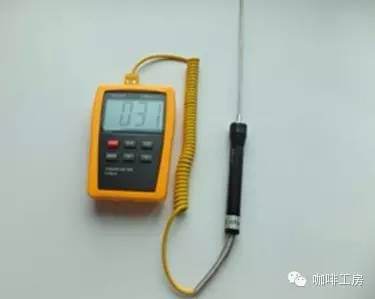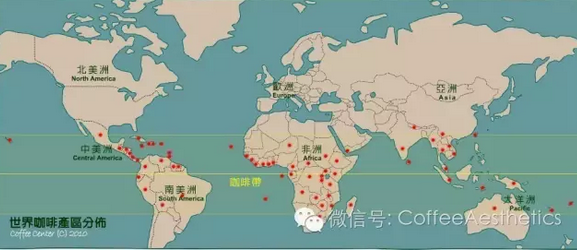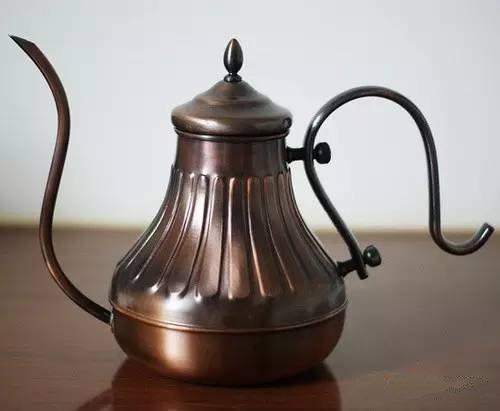Seven factors affecting hand-brewed coffee
For a long time, several variables affecting hand-brewed coffee are as follows: 1. Coffee beans; 2. Degree of grinding; 3. Water; 4. Equipment; 5. Steaming time
Coffee beans
Choosing coffee beans that suit your taste is an important criterion to determine whether your cup of hand-brewed coffee tastes good or not. Many people say that it is too light, astringent and miscellaneous, and the first thing we consider is coffee beans. If the roasting degree of coffee beans is too shallow, it is easy to appear astringent taste, because there will be raw. So I suggest beginners to choose medium-deep baked beans, wait for their own skills, or really want to drink light-baked beans, and then try to buy shallow-baked beans. Therefore, stop worrying about whether it is your own way of making mistakes, but to buy beans from the beginning should be suitable for you, coffee is very knowledgeable, but also a very magical plant, do not overnight, challenge low-controllable beans.
Grinding degree
There are all kinds of bean grinders on the market, and a good bean grinder can ensure that the coffee powder is evenly ground. If the coffee powder is uneven and the fine powder is too much, it will make the coffee taste not pure enough. ("pure" means clean) what is the suitable thickness of coffee beans for hand-brewed coffee? The answer is: moderate grinding, the size of granulated sugar. If the coffee powder is too thick and the hot water flows too fast, it is difficult to extract the aromatic substances from the coffee. If the coffee powder is too fine, the filter is easy to clog, resulting in water and powder soaking time is too long, coffee will appear bitter, astringent taste. Many beginners often walk into the misunderstanding that coffee should be ground as finely as possible, but the result is just the opposite. the control of fineness is the most important factor for a coffee to express the correct flavor. Of course, before you adjust the scale, you first need to understand the beans you use. if the beans you use are medium-and deep-baked, such as Mantenin, then your fine scale may bring more intense aroma and mellow thickness, but it will also bring bitterness and astringency, and if you thicken it, it may bring some grass aroma. But Manning, which loses most of its alcohol thickness, is actually incomplete, so you have to adjust the scale over and over again to the taste you are satisfied with. And if you use medium-to-shallow baked beans, such as Yega Xuefei, then the use of too fine scale may produce strong acid, and the astringency is very serious, which can easily lead to excessive extraction, especially when you take longer extraction time, and if you use too coarse scale, it may bring bright acidity, but the aroma and sweetness of Yega Xuefei will also be much lighter. So how important is the proper scale for a coffee bean? the scale required for the best flavor expression of each kind of coffee is different, because the bean grinder is very different, including the same type of bean grinder, so the scale must be adjusted by its own taste buds. After all, whether it tastes good or not is very subjective.

Freshness
"fresh grinding" is the first condition of good coffee, it ensures the taste of coffee. When the coffee is ground into powder, the oxidation rate of the coffee powder is accelerated, and the aroma begins to lose in 40 seconds. If the aroma of coffee powder is seriously lost, the flavor of natural coffee will disappear.
Cloth powder
After pouring the coffee powder into the drip filter cup, gently shake it to make it flat, this is a very easy to ignore step, or too hard, shake too many times, it is not advisable. The smoothness of the flour determines the uniformity of stewing and extraction of hand-made coffee, which directly leads to the taste of the coffee.
water
Water quality
98% of a cup of hand-brewed coffee is water, and the range of soluble matter (TDS) in water is preferably between 100-250ppm. Don't use tap water, don't use tap water! Use filtered water, or mineral water is fine, but do not use mixed mineral water, the editor is not responsible for the accident.

Water temperature
The editor is often scared when answering questions backstage, some novices do not pay attention to the temperature of the water, this is not allowed, pay attention to the temperature of the water! Hand flushing usually chooses the water temperature between 85 and 95. Too high water temperature will make coffee more bitter, while low water temperature will make coffee sour. Suggestion: deep roasted coffee beans are suitable for 80-85 degrees, while medium and shallow roasted coffee beans are suitable for extraction at about 90 degrees.
Water flow
As long as you pay attention to two points of water injection, one is that the flow rate is stable, and the other is not to inject water at a certain point for a long time, except in the middle. In addition, your common mistakes are:
a. The injected water column is too large and the direction of the water column is too tilted, which will cause the water to flush a hole in the side of the powder layer and run away directly from the filter paper, resulting in insufficient coffee extraction.
b. The water column is pulled too high, resulting in the flow of water to destroy the coffee powder, easy to inject bubbles, and uneven coffee extraction. It will also lead to too much water column and contact air area, and the water temperature will be affected, so the water column must be as close to the coffee as possible.
c. The water flow is unstable, sometimes large and small, sometimes dashing, sometimes ticking off, resulting in different degrees of soaking in different areas of coffee powder, and the taste of coffee will be affected.
Powder-water ratio
I won't say how important the powder is. You often ask, "Why am I so light?" "Why is it so thick?" Oh, it's probably because of your gouache ratio, kids! Due to different tastes, different requirements are different, but we can refer to the gold cup extraction theory. The concentration range of gold extraction is 1.15% Mel 1.35%, and the proportion of water used is about 1:13 to 15. But! The powder-to-water ratio that is basically suitable for Asians is from 1:13 to 1:18. Some people use very little water simply in pursuit of richness, but it doesn't taste good. On the contrary, some people expect to extract more substances with more water, but they do not realize that the later the extraction is, the lighter it is, and the final concentration is not enough. When you get a new bean, you can start at 1:15 and then change it according to your taste buds.
Equipment
The material and shape of the filter cup
At present, the common filter cups on the market are V60 conical single-hole filter cup, KALITA three-hole trapezoidal filter cup and basket filter cup. Different filter cups will have different tastes, you can't simply and rudely say which kind of filter cup is good or bad, there is no difference between good and bad! Let's just say there's a difference in expressiveness. What is important in the filter cup is the material, which is very important to retain the aroma of coffee. At present, the common materials on the market are resin, ceramic, glass, stainless steel, pure copper, copper plating, silver plating. Each has its own advantages and disadvantages.
Filter paper
Please choose high quality filter paper! It doesn't have to be without bleaching, as long as you recognize the big brand, no smell and moderate thickness. Many people use low-quality filter paper cheaply, which is very thin and easy to leak, and some filter paper filter speed is very slow, only water injection, but not dirty, which will inevitably lead to excessive coffee extraction, affecting the taste. People are still wondering why they bought good coffee, but it didn't taste good. The reason is that it is on the filter paper.
Hand punch pot
╮ (╯▽╰) ╭, hand brewing pot has been said before, anyway, you have to choose according to your own level, the novice still suggests a slender mouth, and then pay attention to cover the lid when flushing, otherwise the temperature will drop at the same time, then don't come and ask the editor why my coffee is so sour.
Steaming time
In fact, steaming is only through the hot gas produced in hot water to open the fiber-like structure in the coffee powder, so as to make the extraction of coffee more complete. Conditional friends can try non-steaming extraction, there will be insufficient extraction of the smell of water. Generally, the water used for steaming is relatively less, from the central small water injection circle to the outside until the coffee powder is wet, and then let the coffee powder expand and breathe, the steaming time is generally from 15-35 seconds, the steaming time of deep-baked beans is generally shortened correspondingly, and the steaming time of shallow-baked beans can be increased accordingly. Moreover, the bag will be small in shallow steaming and larger in deep steaming. The reason why steaming requires a smaller flow is that if the flow is too large, it will destroy the infiltrating structure of the surface layer of coffee powder, and the water hammer effect caused by too much water will wash a lot of fine powder directly to the bottom of the filter cup. Affect the coffee extraction behind.
Important Notice :
前街咖啡 FrontStreet Coffee has moved to new addredd:
FrontStreet Coffee Address: 315,Donghua East Road,GuangZhou
Tel:020 38364473
- Prev

The earth smells like coffee! Let's popularize the main producing areas of coffee!
The distribution of coffee 1. Coffee growth is mainly distributed in the tropics with the equator as the center and latitudes between 25 degrees south and north. two。 World: coffee is grown in more than 70 countries. The main coffee growing areas are Central and South America, Africa, Asia and Indonesia. 3. China: mainly distributed in Yunnan, Hainan, Taiwan, Guangdong, Panzhihua, Sichuan
- Next

Beginners must see it! Some things about hand brewing pot and hand coffee (with illustration video)
There are two kinds of hand brewing pots: the palace thin mouth pot and the crane mouth brewing pot. a. Court thin mouth pot: the thin mouth brewing pot is the most widely used coffee brewing pot. Its water flow is fine, and it is easy for the brewer to master and control. Crane mouth brewing pot: this is a kind of brewing apparatus that the ultimate manual brewing talent dares to try, and it requires very high technical requirements for the brewer to control the flow of water. Suggestion
Related
- Beginners will see the "Coffee pull flower" guide!
- What is the difference between ice blog purified milk and ordinary milk coffee?
- Why is the Philippines the largest producer of crops in Liberia?
- For coffee extraction, should the fine powder be retained?
- How does extracted espresso fill pressed powder? How much strength does it take to press the powder?
- How to make jasmine cold extract coffee? Is the jasmine + latte good?
- Will this little toy really make the coffee taste better? How does Lily Drip affect coffee extraction?
- Will the action of slapping the filter cup also affect coffee extraction?
- What's the difference between powder-to-water ratio and powder-to-liquid ratio?
- What is the Ethiopian local species? What does it have to do with Heirloom native species?

